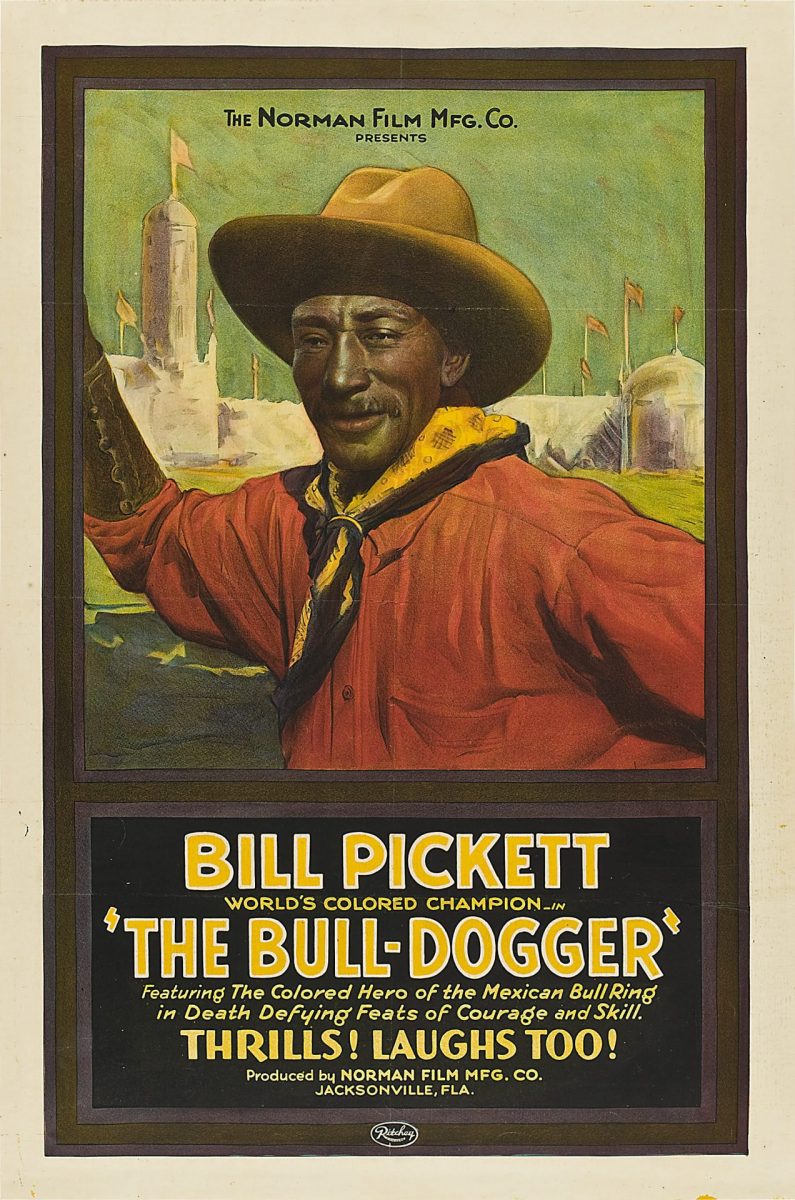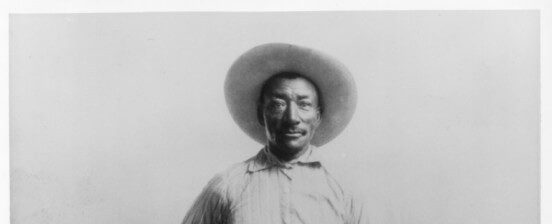Did you know that 1 out of every 4 cowboys were Black?
Many people, including Paul W. Stewart, did not know this fact; however, Stewart made it his mission to make the historical roles and contributions of these Black cowboys more widely known. His efforts ultimately resulted in the creation of the Black American West Museum and Heritage Center in Denver, Colorado.
The creation of the museum spawned from a childhood curiosity and grew into righting a wrong often shared as “truth”. As a boy reared in Iowa, Stewart recalled playing the children’s game, “Cowboys and Indians”. When he wanted to act as a cowboy, he was always told that he could not have that role, as there were no Black cowboys.
When he became an adult and had been living in Denver, he discovered that there surely had been Black cowboys. After his discovery, he devoted a great deal of his life collecting, curating and sharing his research. His collection includes photographs, stories, memorabilia, documents and clothing that provide much-needed detail to fill in the blanks of Blacks as not only cowboys, but Blacks as pioneers of the West!
Stewart made his expansive collection available to the public in 1971 and it was exhibited in the basement of Clayton College in Denver. Due to community efforts, including those of Historic Denver, Inc., the home of Dr. Justina Ford was proposed to be saved from being razed in order to become the new site of Stewart’s collection.

The proposal was approved and the house was moved to the historic Five Points community in 1984. The home was restored and opened in 1988 as the “Black American West Museum and Heritage Center”, the new home of the Blacks in the West collection; Stewart was the curator.
The selection of this home was appropriate as Dr. Julia Ford was the first Black woman physician in Colorado. Ford was best known for her work in obstetrics and pediatrics in the Five Points community. In her fifty years as a practicing physician, it is estimated that she delivered greater than 7,000 babies! Ford, with her husband, John, bought the house in which she would open her practice, as no hospital would hire her because she was a Black woman. The selection of Dr. Ford’s home for the new museum site provided greater exposure to illustrate that Blacks were active in a myriad of professions, such as blacksmiths, educators, homesteaders, physicians, miners, business leaders and ranchers, all of which were integral to developing the American West.
When you visit the Black American West Museum and Heritage Center, you may take walking tour of the Five Points district, known as “Harlem of the West”. You can experience diverse exhibits, ranging from lawmen, such as Bass Reeves, to the military, which highlight the Buffalo Soldiers. These African-American soldiers served in the 9th and 10th Calvary and 24th and 25th Infantry regiments of the U.S. Army.
Bass Reeves was the first Black deputy U.S. Marshal, west of the Mississippi River, and he worked primarily in Arkansas, Texas and the Oklahoma Territory. An expert marksman, he utilized disguises, had an Indigenous American as his companion, gifted pieces of silver, and rode a grey and white horse. For these reasons, many believe he was the inspiration for the Western lawmen hero character, The Lone Ranger. In his 34 years of being a peace officer, Reeves arrested more than 3,000 felons; slayed 14 offenders in self-defense and had never been wounded!

The West simply would not have been able to develop as quickly as it did without the Buffalo Soldiers, especially under the great leadership of Colonel Charles Young, the 3rd African-American to graduate from the U.S. Military Academy at West Point. To understand their contributions properly, it must be emphasized that daily life for the Buffalo Soldiers was extremely difficult. They were given inferior equipment as well as horses generally unfit and too old for military service. They even had to provide their own neckerchiefs, which were essential in protecting them from the dust-filled West.
The 9th U.S. Calvary and the 10th U.S. Calvary often engaged in the most hostile of situations. They were commanded to retain Indigenous Americans, including the Apache, Arapaho, Cheyenne, Comanche, Kiowa and the Lakota, on reservations but also engaged them in battle.
The Buffalo Soldiers, according to Robert V. Morris in Black Faces of War: A Legacy of Honor From the American Revolution to Today, brought justice to “all outlaws of all races, cattle rustlers, White slave-trading Comancheros and bootleg-whiskey peddlers … United States marshals, county sheriffs, tax collectors and other civic officials could not have performed their duties without the escort from the Buffalo Soldiers …”
The Buffalo Soldiers also:
* Built and renovated military posts
* Strung thousands of miles of telegraph wire
* Escorted stagecoaches, trains, cattle herds, railroad crews, survey parties
* Opened new roads
* Prepared maps of large tracts of unchartered territory
* Located vital bodies of water for settlers

Also available in the museum are rooms dedicated to the Black homestead, farming and ranching, as well as Dr. Ford’s examining room. You may view images of Black cowboys such as Bill Pickett, who was also a rodeo and Wild West performer and actor. You may even catch a Black western film such as Harlem Rides the Range, starring Herb Jeffries & Spencer Williams, or the documentary on Dearfield, Colorado. Located near Greeley, Dearfield was a bustling, Black pioneer town of approximately 500 residents. Founded by O.T. Jackson and built upon the principles of self-reliance as espoused by Booker T. Washington, Dearfield experienced success until the early 1940s. Economic depressions, drought and dust storms made it impossible to remain living there.

Presently, the Black American West Museum owns many of its lots. Perhaps, they will expand their Museum by building on them. Influencing this possible expansion could be the 2018 collaboration with the Smithsonian National Museum of African American History and Culture, coupled with the 2019 gift of $100,000.00 (USD) by Dr. Renee Cousins King. This unique collaboration and generous gift bolster the significance given to the museum’s mission. There is a great need to document, preserve, archive and promote the history of Blacks in the West in order to understand the immeasurable value these Blacks made to their communities, the American West and society!
